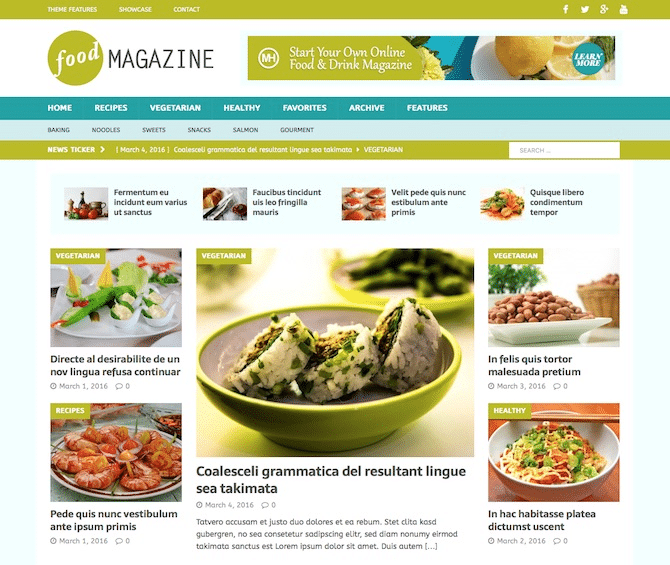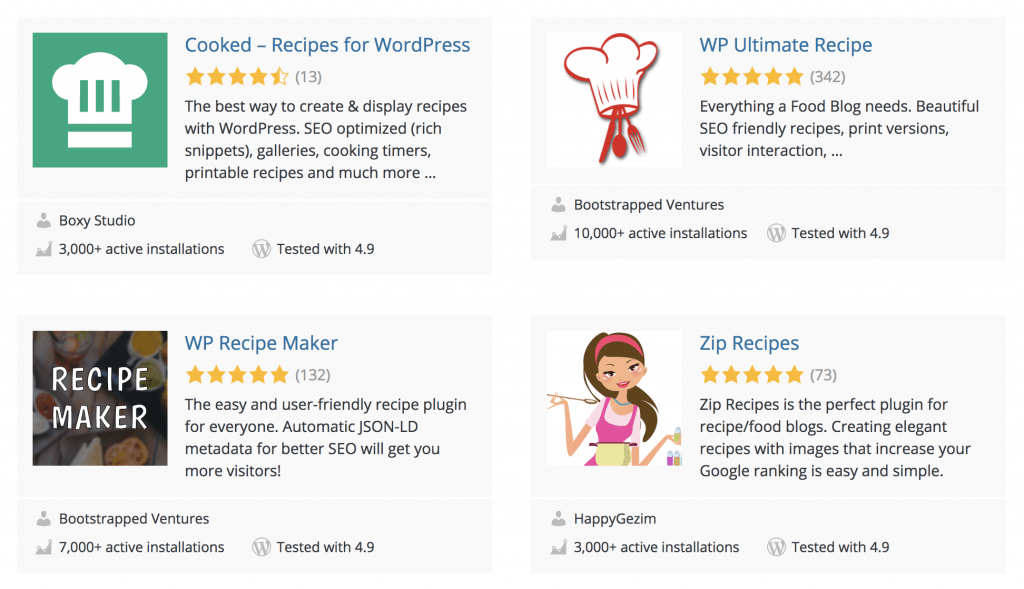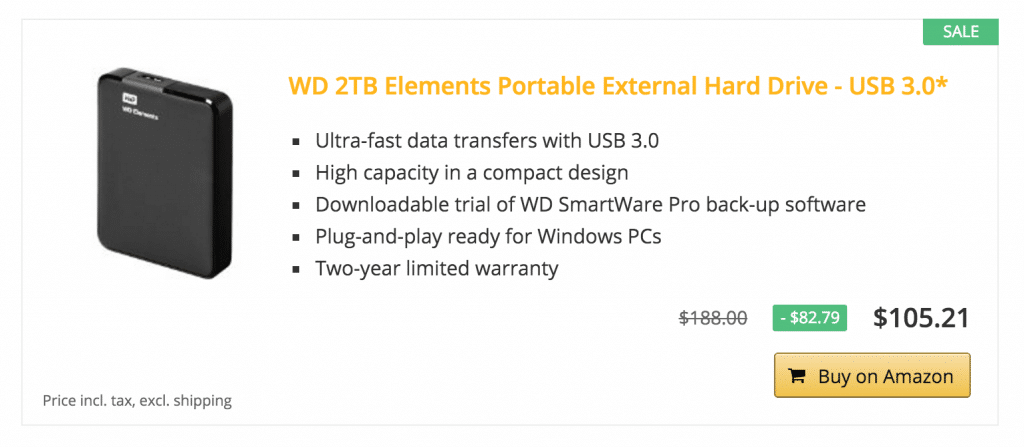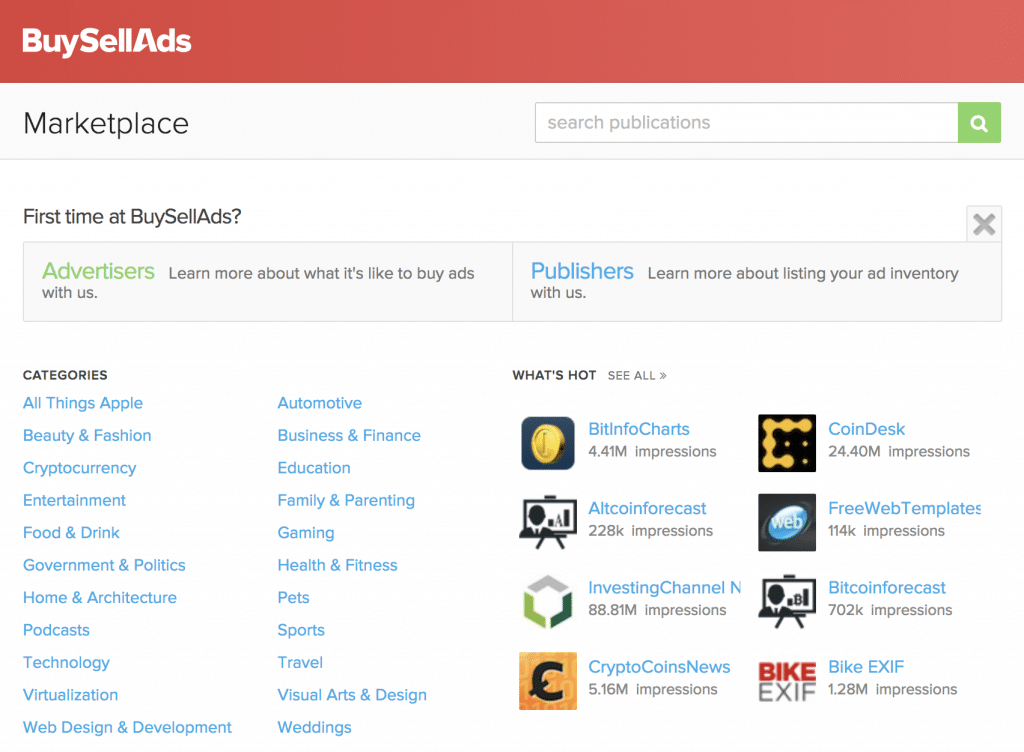There’s a blogging niche for just about every topic, with some topics dominating the popular interest moreso than others. And people flock to certain niches as they come into fashion. Speaking of fashion, sometimes niches evolve to take on new meanings. Fashion has become lifestyle, has become travel—you get the idea.
While some niches are trendy, others are timeless. The perfect example is the niche of food blogging, which seems to never quite go out of style thanks to a super receptive audience of hungry patrons. Everyone’s gotta eat and many flock to the internet to seek out information regarding how to do it with regards to certain dietary restrictions, allergies, and ideas for improving on dishes you already know.
Thanks to the popularity of food blogging (both in terms of available resources and audience size), those with specific dietary needs and preferences don’t have to settle—they can consult the blogosphere to empower the creation of a meal that tastes amazing regardless of what restrictions they have.
Let’s go through the process for how to start a food blog, starting with the all-important why.
Why Start A Food Blog
It seems clear as to why someone would want to read or follow a given food blog… but why start one?
The decision to start a food blog ultimately comes down to passion and drive, as any type of blog takes a considerable amount of energy to maintain. To get a little more granular, consider these reasons for starting a food blog:
- You love to cook, it’s your passion and you want to share it with the world.
- You’re looking to challenge your skills. You can only post about a certain kind of cuisine and the things you already know before your audience will start to get bored. Maintaining a food blog will mean pushing yourself out of your comfort zone in learning new things to keep people coming back for more. And it’s not just about learning new recipes or techniques. Running a food blog means learning other skills like how to use WordPress, how to be effective with social media marketing, and how to take great food photography shots.
- Be part of a community. The food blogging community is HUGE and the people who make it up are very welcoming and helpful, especially to newbies. Being an active member of the community will help you to make friends and find collaborators.
- Gives you a creative outlet. Whether you have a specific end goal or not, a food blog provides you with an outlet to channel your creative energies in multiple different ways: cooking, writing, and photography (to name a few!).
- Build credibility and establish expertise. Your food blog can also serve as an online portfolio of sorts. If you’ve worked in a food-related profession and have tips or insights to pass on, you will have an advantage in appearing expert. If you don’t have that kind of experience, you can still build credibility—especially as your food blog becomes popular. People may come to you for your expertise, with different opportunities, like writing your own cookbook, freelance gigs, and even consultancy positions.
- Earning potential. Besides the reasons to start a food blog already listed above, you can also earn from food blogging affiliate marketing and sponsorships. Of course, if your main motivation for starting a food blog is to earn, you’ll probably lose interest in maintaining it over the long-term.
Whatever your motivations, let’s dig into specifically how to start a food blog.
How to Start A Food Blog
There are 4 major steps for how to start a food blog:
- Research: Choosing your topic, niche and determining what makes you different from what’s already on the market.
- Setup: Technical steps to set up your food blog, like choosing your domain and hosting provider, setting up WordPress, and customizing your WordPress theme.
- Content creation: Creating articles and the other content/media that will populate your blog.
- Promotion: Getting the word out to reach more readers in your target audience.
How to Start a Food Blog: Research
Though people love them as a rule, food blogs are a dime a dozen at this point.
Try to think of ways to make yours stand out from the pack while you’re working through the initial steps for how to start a food blog. It’s best to pick a very specific niche, as a food blog that covers too wide of a variety of topics will have a hard time holding attention and a hard time driving traffic from search engines.
Food blogs with a unique niche angle tend to perform better on the SEO front because when people search for a recipe or cooking technique that they’re interested in, they are usually searching with very specific terms that general blogs can’t deliver with authority. Picking a niche and weaving in your story will make it all the more compelling to follow over time.
Food Blog Sub Niches
“Food blog” is a very all-encompassing term.
A food blog is a blog that documents anything from recipes that the author wants to try or experiment, restaurant reviews, or even a journal-style delivery about a person’s life choices. A blog is a personal thing—there’s no right or wrong content focus.
Here are some suggestions for sub-niches of food blogging:
- Recipes: ~99% of food blogs incorporate this format, with recipes that are usually accompanied by personal stories. Sally’s Baking Addiction is a popular blog that uses this formula, specifically featuring recipes of sweets. A variation of this would involve a food blog that documents general cooking adventures (like Budget Bytes), or can focus on certain cuisines (like The Hungary Buddha Eats the World).

Food blog example - Restaurant and food product reviews: Detailed dining guides and reviews of consumer packaged food goods, such as Chritiques or Urban Cheap Ass.

Dining guides - Super niche: Cataloging very niche subjects within food itself and sometimes even incorporating advice about certain lifestyle choices, like Paleo food blogs (Paleo Leap by Sébastien is one of the most popular and is hosted on Kinsta!), vegan blogs, and so on.

Paleo food blogs
Questions to Ask Yourself When you Start a Food Blog
While you’re thinking about the concept during the initial steps for how to start a food blog, these questions can help you make a decision:
- What do I love about food?
- What are my strengths and weaknesses?
- What blogs inspire me and how can I be better/different from them?
- How can I help my target audience?
- What is the end-goal of this blog?
A great way to all but guarantee your success? Find a gap in the market. Before you start setting up your food blog, you have to get your branding and unique selling/value proposition down pat to help guide you through the many decisions you’ll make over the long-term.
How to Start a Food Blog: Setup
Once you’ve figured out what to write about, keep the momentum going by starting the setup for your food blog.
Elements of a Professional Blog
If you’re creating a blog for an audience, you’ll want to make sure that your setup is undertaken with a level of professionalism. Here’s what you’ll need to convey your status as a food blogging boss:
- A reliable and flexible blogging platform. Your blogging platform or content management system is the place where you’ll write and store all of your posts. As far as we’re concerned, the only one worth considering is WordPress.org. WordPress.org has the most flexibility of any other top contenders. Free options like WordPress.com and Blogger are fine for getting started but not truly a long-term solution for success. To add some context, WordPress.com doesn’t even allow you to make ad revenue. Spend a little money on the self-hosted version of WordPress to get off on the right foot.
- A unique domain name. A domain name is your blog’s main identifier. Although there are free blogging platforms that can provide you with a connected URL (i.e. yourname.WordPress.com), having a domain shows commitment and ultimately comes across as more professional. When deciding on a domain name, make sure it’s easy to recall, easy to spell, and not too long. Here are a few recommendations if you are looking for a domain registrar.
- A reliable web host. A web host is where your files, content, and images are stored. When you sign up on a free blogging platform, the platform will store your files for you, but if you choose to go through the self-hosted route, you need to find one (preferably, with good WordPress-specific options).
WordPress Themes and Plugins
After you’ve gone through basic web host, domain, and WordPress setup, it’s time to focus more specifically on how your blog will look.
Without going into excruciating detail, you’ll start by:
Selecting a WordPress Theme
You can choose from both paid and free options. There are many themes that cater specifically to food blogs. When you just getting started, don’t overthink the theme. If you’re new to blogging, it’s ok to start with a free theme and change it later on. Here’s how to install a WordPress theme.
A popular premium theme used by many food bloggers is the MH Magazine theme from MH Themes.

Installing Plugins
Plugins are codes that you install on your WordPress website to add a particular type of functionality.
If you’re planning on starting a recipe food blog, you’ll want to consider the variety of recipe plugins available. These plugins help showcase your recipes in a way that makes them stand out, improving readability while some also include built-in SEO benefits.

Here are three other types of plugins to consider for use when you start a food blog:
- Image optimization: Food blogs tend to use very large high-resolution images. This can drastically slow down your food blog if they aren’t optimized. Leverage image optimization plugins such as Imagify, Optimus WordPress Image Optimizer, WP Smush, or TinyPNG. For more tips check out our in-depth image optimization guide.
- Unit Converter: Once it’s published on the internet, your blog is accessible to a global audience. Depending on who’s reading your blog, they may need to employ the use of a unit converter to adjust measurements to what they’re most used to.
- Pinterest button: Pinterest is a visual search engine and beautiful food photography tends to perform well on the network. Make it easy to pin your mouth-watering images to drive more traffic to your website. Social Warfare offers a comprehensive option for social share buttons (including a Pinterest button).
SEO
SEO, or search engine optimization, is the process of increasing website traffic quality and quantity through search engine ranking efforts.
SEO is a very broad field, and there are several factors that go into fully optimizing a site, but here are a few basic things you can do regardless of your experience level with SEO:
- Install the Yoast plugin. This plugin gives you specific tips for making your posts more SEO-friendly in beginner-friendly language.

- Make your site mobile-friendly. This starts with choosing a mobile responsive WordPress theme. Mobile-friendliness is one of the most important Google ranking factors.
- Create great, relevant content. Google looks at the relevancy of the content you post when delivering search results for those searching for specific terms.
- Ensure you’re using proper schema. If you’re using recipes on your food blog, make sure to use the proper schema markup where it’s applicable. If you don’t, Google might lose all of your rich snippets in Google. Basically, a recipe needs to include both ingredients and steps. You can use a WordPress plugin like WP Recipe Maker to ensure you’re using proper non-food schema and recipe schema markup.
REMINDER: If you are a recipe, DIY or lifestyle blogger you CANNOT mark-up non-edible content with Recipe Schema. A new round of Manual Action notices hit this AM. Here it is "bath and shower bombs" — not super-appetizing. You do this, you lose ALL rich snippets! No fun. 1/2 pic.twitter.com/cr9nM9MFQa
— Casey Markee (@MediaWyse) January 25, 2019
Once you start to get a grip on SEO, go through our WordPress SEO checklist for more advanced fixes. And make sure to check out our article about the best WordPress SEO plugins and this 5 SEO hacks tutorial to boost rankings on your new food blog.
Content Creation
The most important part of your food blog is the content.
Content doesn’t just have to be confined to articles (or text); it can also take the form of photos (graphics, infographics), videos, and audio (podcast). Don’t feel pressured to do all of this at once (or ever) but feel empowered to explore various mediums based on your interests and audience as your food blog starts growing.
If nothing else, focus on these two things:
- High-quality, original content. Relevant content contributes to SEO and is one of the things that will attract readers to your blog. Work to create evergreen content (also known as cornerstone content) that drives traffic regardless of the time of year, because it’s so useful. Try adding a unique take or story to something but no matter what, never plagiarize—it will be penalized by Google.
- Another thing people look to in a food blog is the photography. People eat with their eyes, so readers must be able to not only see but also smell and taste the food you’re blogging about. Good photography is important especially when it comes to the blog promotion stage, performing well on visually-centered social sites such as Instagram and Pinterest.
When creating content, try to think forward and work your way backward. Many bloggers create content as they go along, which can make them lose momentum (especially if they can’t think of anything to post). Some people suggest creating at least 15 posts before launching a blog so you have enough buffer time to create posts to continually be putting out content before creating any more.
If you know you’ll need help maintaining your food blog once it gets started, consider outsourcing content writing to a third-party. iWriter can be great for just starting out and for those on a budget. If you need higher-quality content and are willing to pay accordingly, WriterAccess is a great solution, which can pair you with US-based, screened writers.
Food Blog Promotion
Page views aren’t everything—follower count is the most important metric to grow.
Consider these three ideas for driving traffic to your food blog:
- Search engines: The best way to get traffic, but hard to start from scratch thanks to stiff competition. You can improve your chances of ranking for relevant queries by employing SEO tactics and by using PPC ads.
- Traditional media: Although most people say that newspapers and magazines are outdated, food bloggers featured on these mediums get lots of exposure for their blogs.
- Social media: The easiest way to share your content, especially to your own direct network. There are several social media sites available and most people are on them. Social sites also have capabilities for paid targeted advertising which allows you to reach the audience that will find your content most relevant to them.
Social Media Promotion Ideas
On a general note, install social share buttons on your blog to make it easy for your audiences to share your content with their networks. Specifically, here’s what you can do on 4 of the most popular networks for sharing blog content:
- Facebook marketing: The biggest social network with over 2 billion monthly active users. Use it to join relevant Facebook groups, start a blog fan page, and invite friends & family to like it. Consider also making use of targeted ads.
- Twitter marketing: A microblogging site famous for the ability to start a two-way conversation with almost anyone. Use it to find like-minded individuals, share relevant articles to build industry expertise, and reply to inquiries from potential clients & collaborators.
- Instagram: A visual social site with over a billion users that can be used to share pretty food photos. Many food bloggers claim that it’s the primary social media platform in which they get the most engagement—even though users only get one link back to their site in their profile.
- Pinterest: A visual search engine; the largest source of traffic for bloggers. Use it to create pins that link back to your food blog. For more tips make sure you check out our Pinterest marketing guide.
A Few Ways to get Traffic/Followers
Besides social media, consider these promotional tactics:
- Email marketing. An owned medium by you that’s even more direct than social media marketing. General blogging advice promotes building your list before you need it, even if you won’t be ready to send email updates for a while. Create a compelling lead magnet to entice people to sign up for your list (“Sign up for updates” just doesn’t seem too compelling on its own).
- Guest post on other related blogs. This helps you build your network, build backlinks (helpful for SEO), and reach a new audience with the same characteristics of your target audience.
Making Money with Food Blogging
Once you build up some traffic to your food blog, Google AdSense and these AdSense alternatives are probably one of the easiest and most reliable mechanisms for earning money. A great WordPress plugin to help implement this is Ad-Inserter. Ad-Inserter allows you to create ad blocks just about anywhere on your site, A/B test things, rotate between different options, and so on.

Amazon native shopping ads can also be a big win when it comes to making money with a food blog. These ads scan the content of your site, then display similar products (can be food items) on Amazon. Since Amazon converts so well (74% for Prime members and 13% for non-Prime members according to a study by Millward Brown Digital), this can be a killer combination when implemented along with AdSense.
If you want to link directly to an Amazon product, consider Amazon Affiliate for WordPress. This creates an easy GUI to quickly add any product you want from Amazon to your WordPress posts, pages, and sidebar.

Finding a good affiliate in the food space and focusing on ways you can drive traffic to them can be a nice source of additional income. An example? Freshly, a meal-delivery service. Sign up for their affiliate program, throw up some banners in high-attention areas on your site, and take note of the situations where you drive the most sign-ups.
If you don’t like the affiliate method, you could also charge for ad placement on your site. Third-party platforms like Gourmet Ads or BuySellAds make it easy to sell advertising space on your food blog.

As a general rule, make sure to pick an affiliate program that will be specifically relevant to your foodie audience. Affiliate programs typically pay large commissions, not just pennies or dollars from a click, so if done correctly, the money you earn can add up quickly.
And last but not least, once you have a solid visitor base, offering sponsored posts can bring in much larger one-time payments. Rest assured, there will always be companies looking for blogs to promote their products on, as well as getting reviews from a food blogger trying their product.
How to Start a Food Blog
A food blog provides the ideal opportunity to unleash your creativity as well as learn—not just with cooking but also with other skills like photography, web design, writing, and social media. Aside from the personal fulfillment it gives, a food blog can also help you to create meaningful relationships and even provide the opportunity to earn money.
If you’ve been through the process, what are your best tips for how to start a food blog? Let us know in the comments!




